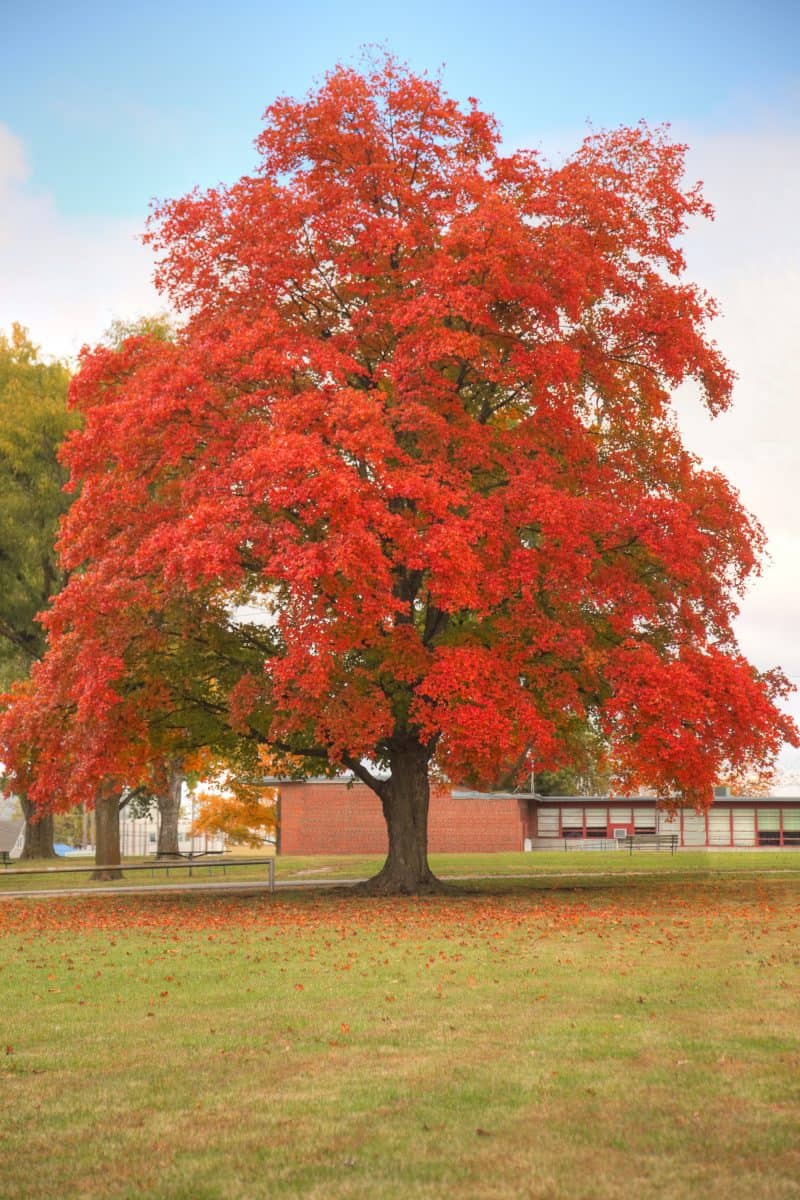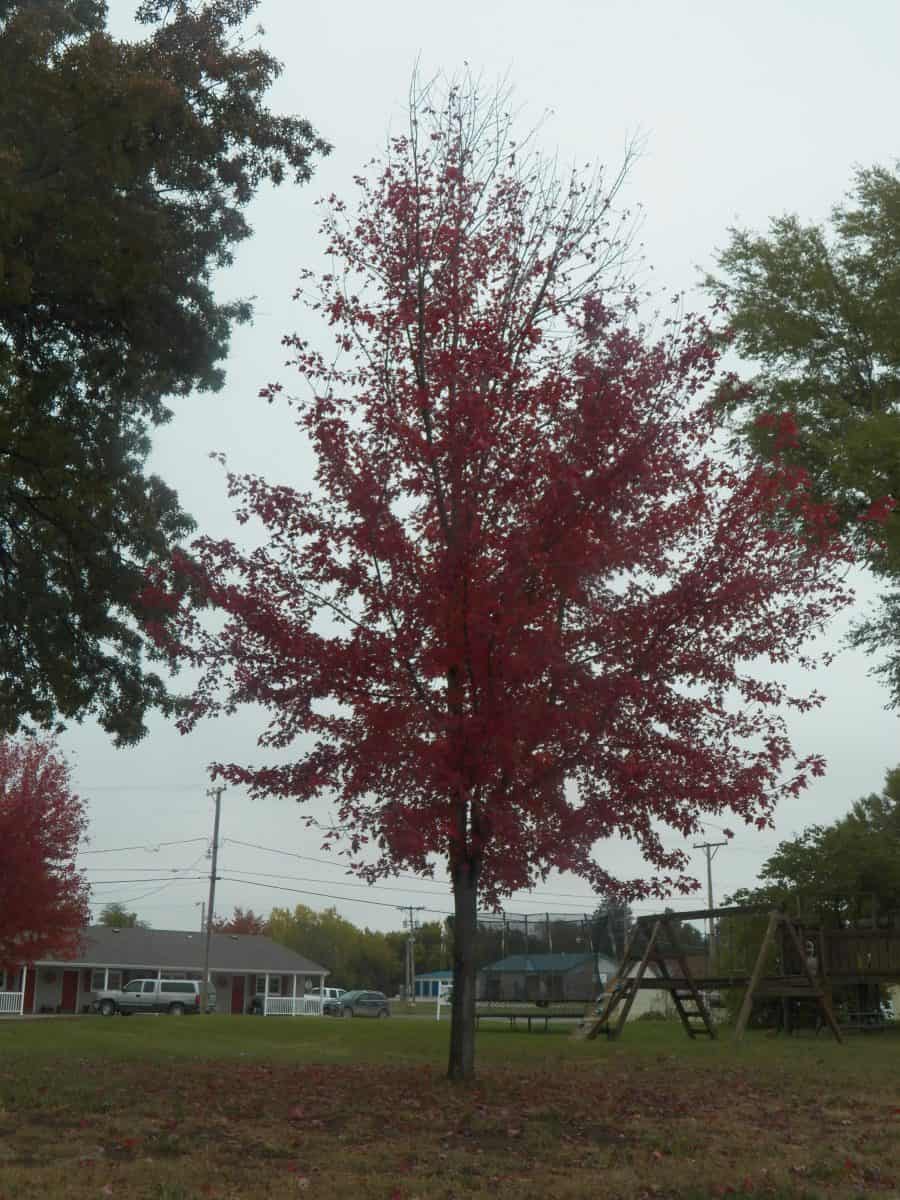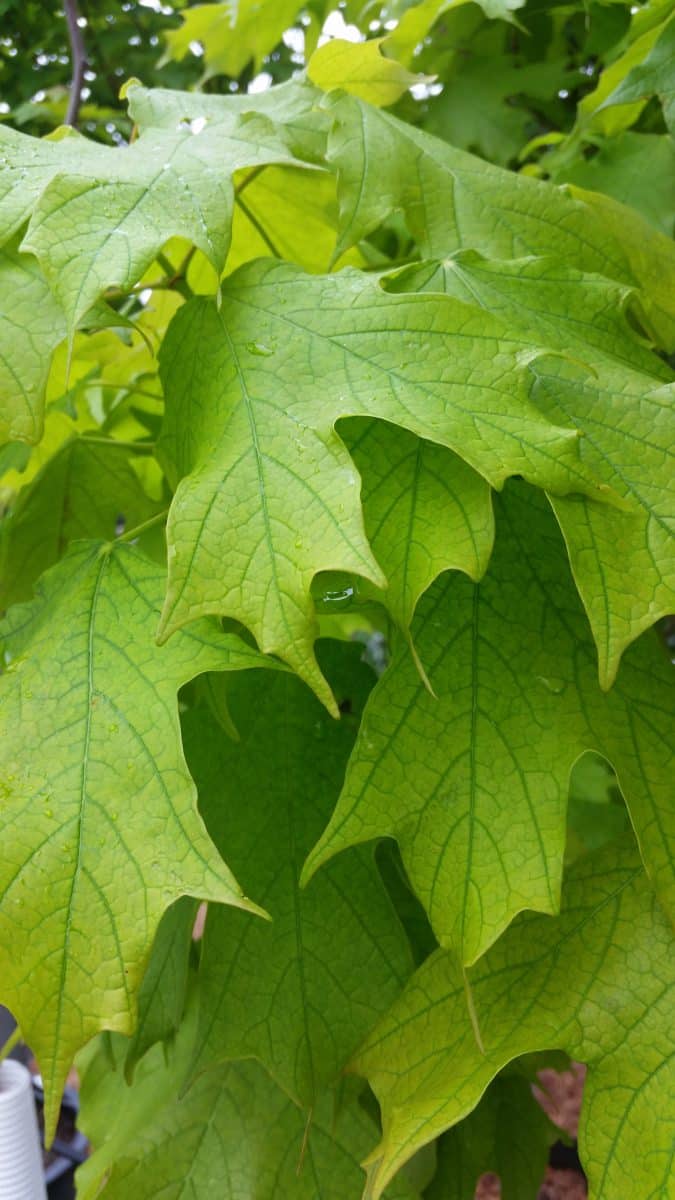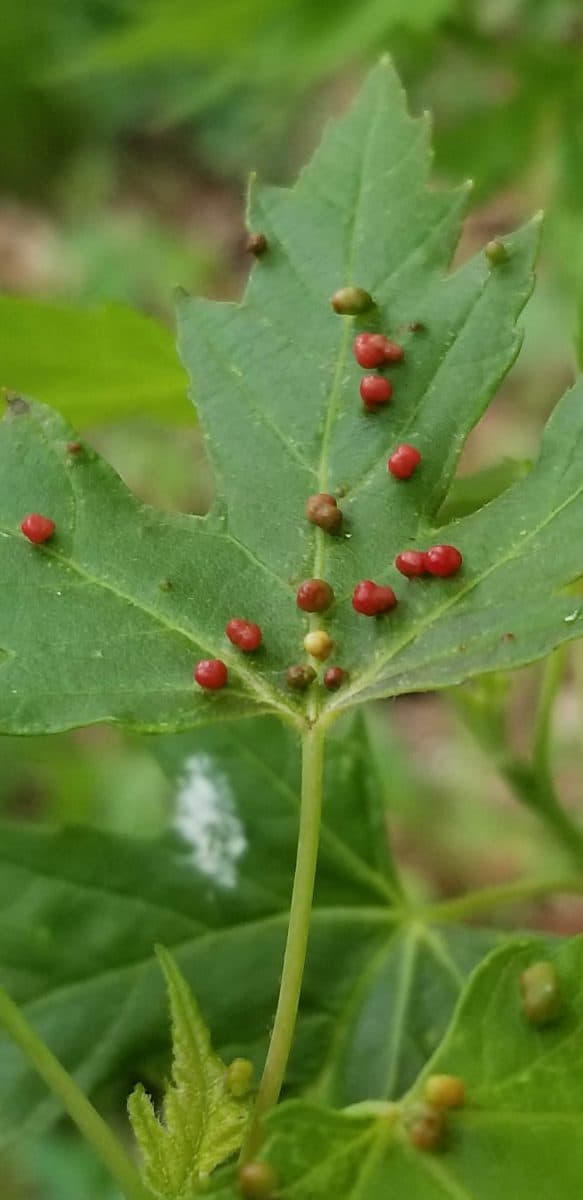When autumn comes, people’s thoughts turn to New England. The eastern coast of North America is well-known for their covered bridges, rolling Appalachian mountains, and their autumn colors. And maple trees make the up the bulk of the colorful trees there. The maples that can be found there include sugar, silver, red, boxelder, and snake bark maple.
Choosing a native maple tree for your landscape becomes difficult when presented with hundreds of cultivars stemming from multiple species, both native and non-native. Hybrids are also a common thing in the nursery, and how do we decide what to choose?
As a landscape designer, maintenance supervisor, and landscape consultant, I have had the privilege of meeting and working with many great arborists. From them and my own experiences, I can help you decide what maple tree to pick for your own landscape.
Sugar Maples
Sugar maples are the best choice for northeastern United States landscapes, as well as the Central Great Plains and Midwest. While they are not my personal favorite maple, they are tougher and have better fall color than any other maple in our areas.
They grow well in a variety of locations, from dry sunny ridges, to open landscapes, to forests. It would be best to plant 3 or 4 together in a grouping, because trees like to be together.
The dark green leaves of most sugar maples are tatter resistant, meaning that they do not tear easily in strong winds. Fall color ranges from golden yellow to orange to bright red. Native sugar maple trees can grow 40 to 80 feet tall and 40 to 60 feet wide.

Sugar Maple Cultivars
While there are certainly a lot of cultivars of maple trees, there are only a few cultivars of sugar maples that I would recommend. The best varieties have thick, leathery leaves that do not tatter, are quick-growing, and have reliable fall color.
Oregon Trail – This cultivar comes from a parent tree in Northeast Kansas, from the City of Beautiful Maples (Hiawatha, KS). It has dark green leaves, very tatter proof. It is a quick grower, putting on 12 to 18 inches of new growth a year. The fall color is orange to red and very stable and reliable, every year. It grows 50 to 60 feet tall and wide.
Autumn Splendor – This cultivar comes from the Caddo seed source in Oklahoma. The Caddo maples have been known to be extremely drought tolerant, turning color in even the driest of seasons. The leaves are dark green and leathery, resisting tatter. It is a moderate grower, putting on 12 inches of growth per year. Autumn Splendor grows 45 feet tall and wide, with orange-red fall color.
Unity – This cold hardy cultivar is the best for northern climates, up into Zone 3. It was selected from a source in Canada, and resists frost cracking and dieback in northern climes. This tree grows nicely, 12 to 18 inches per year. It grows 50 feet tall and wide, and has orange-red fall color.
Sugar Maple versus Freeman Hybrid Maple
What comes up a lot in conversation is “which do I pick?”. ‘Autumn Blaze’, well-known throughout the United States is a household name in trees. But does it stand up to the hype and to a good sugar maple? No it does not.
While ‘Autumn Blaze’ and its successor, ‘Matador‘, are good trees for fall color, they are not the sturdy, easy to grow tree that the sugar maple is.
Freeman hybrid maples were created with various crossings between silver and red maples, trying to achieve a fast growth rate with good fall color. The result was ‘Autumn Blaze’ and similar cultivars. They grow very fast, up to 48 inches per year, and usually have good fall color.
However, many times ‘Autumn Blaze‘ and other cultivars will only develop color in half of the tree at a time. And the color is not long lived. Red maples are known for not coloring up early, and then they drop their leaves quicker than other maples. This heritage comes back to bite the Freeman hybrids.
Another issue with these hybrid maples is bark cracking. Exposed to the sun and brighter angles in the winter, the bark on the southwest sides of the trees develop sunscald lesions which lead to cracking, insect pressures, and often death. When planted in such large numbers as ‘Autumn Blaze‘, the trunks do not often get wrapped in fall as they should.
Red Maples
As I mentioned above, red maples are not always consistent in their fall coloration. That being said, there are some cultivars of this native tree that are fairly consistent and do well in landscapes. Red maples grow better in the Midwest and along the eastern edge of the Great Plains. They prefer areas of higher rainfall and are not particularly drought-tolerant.

When they do color up nicely, autumn colors are brilliant to bright red, sometimes orange. The leaves are smaller than sugar or silver maples, and are not very tatter proof. The biggest problem with red maples is that they suffer from iron chlorosis on high pH soils.
Red Maple Cultivars
Burgundy Belle – This red maple comes from Wathena, KS, and is more tolerant of high pH soils than most red maples. It is more drought tolerant than the straight species, and fall color is a deep burgundy color. ‘Burgundy Belle’ grows 40 feet tall and wide.
Redpointe – This cultivar turns a bright red color autumn. It has a pyramidal form, growing 50 feet tall by 30 feet wide. It is very tolerant of heat and cold and can grow well in high pH soils.
Boxelder Maple
The boxelder maple is a wetland tree, growing near streams, rivers, lakes, and swamps. It is often considered a trash tree, but there are cultivars that can really add depth to the landscape. Plant it where it will get water runoff from downspouts or a sump pump, and it will be happy.
The leaves of the boxelder are very similar in looks to poison ivy, and it is often mistaken for the irritant when young. However, the stems are bright green when young, helping with identification. They grow quickly, up to 36 inches per year.
Boxelder Cultivars
Kelly’s Gold – In northern climes, this tree has almost chartreuse foliage. If planted in the south, only the new foliage is yellow, the leaves turn green in summer. It grows 25 feet tall and wide and is well-behaved in the landscape.
Sensation – This cultivar is the best choice when choosing a boxelder maple. It is a seedless male selection of the species, and has excellent form and structure. The habit is rounded and it grows 30 feet tall and wide. Fall color begins bronzy-red and then turns scarlet over time.
Taking Care of Maples
Maples trees are easy to plant and grow. When choosing a tree from the nursery, try to find one that is in a grow bag or bare-root, not in a black nursery pot. In black or white plastic pots, a tree’s roots circle the inside of the container. This habit will continue after the tree has been planted, and will often result in premature death of the tree as the roots choke the life out of it.

Planting Maple Trees
Site your tree in a location that is best suited for its particular requirements. As mentioned above, boxelder maples prefer moist areas, while sugar maples will grow better in drier spots. Make sure to give the tree room to spread out and grow as it matures.
Dig the hole for your tree as big around and deep as the bag it is in. There is no need to add amendments to the soil if you have picked the correct tree for your site. Cut open the bag and remove it from the root ball. Place the tree in the hole, making sure the level of the root ball is at grade or slightly above.
Next you need to fill back in the hole with the soil you dug out of it and water deeply until the soil has settled around the root ball. Stake the tree with a single pole or use 3 t-posts if it is a large tree. You must plan to remove the stakes in 1 year.
Finally, mulch the tree using a locally available mulch. It is best to use regionally available mulches, so that you are not contributing to the use of hazardous environmental practices.
Pruning Maple Trees
Maple trees are best pruned in July and August, when there is less chance for unsightly sap flows. If pruned in winter, there is a greater chance for sap flowing out of the wounds, as the trees push sap whenever there is a warm spell.
When pruning any tree, be sure to cut outside of the branch-bark ridge, that runs between the branch and the trunk. Cut to outside of the ridge, by about 1/4 inch.
Pests of Maple Trees
Aphids
Aphids are one of the bigger pests of maple trees, even though they are tiny in size. They feed by sucking plant juices from the leaves of the trees. Aphids are also a messy pest, as they feed they poop out honeydew, which is a sticky, sugary material that drops onto windshields below.

Aphids can be managed with a yearly application of a systemic insecticide, such as Imidicloprid of Dinoteferon. Another way to relieve the pressure of aphids is a spraying of soapy water on the undersides of the leaves on a cool day, followed in a few hours by just water.
Maple Bladder Gall Mite
The bladder gall mite is a tiny insect that produces an ugly appearance. Even though the damage to the leaves is only aesthetic, if you have a nice looking tree it can be an annoyance. There is no recommended control, though a systemic insecticide applied the previous fall may lessen the damage.
Iron Chlorosis
This is mainly a problem with red maples growing in high pH soils. Iron chlorosis is distinguished by yellow leaves with bright green leaf veins. Severe iron chlorosis can weaken the tree and lead to premature death. It is best corrected by planting cultivars that are adaptable to high pH soils or by applying an injection of iron in the spring and fertilizing the yard with sulfur.
Conclusion
Maple trees are great trees for the landscape. They have great fall color and are very versatile. I believe that every landscape should have at least 1 maple tree, preferably a sugar maple.




